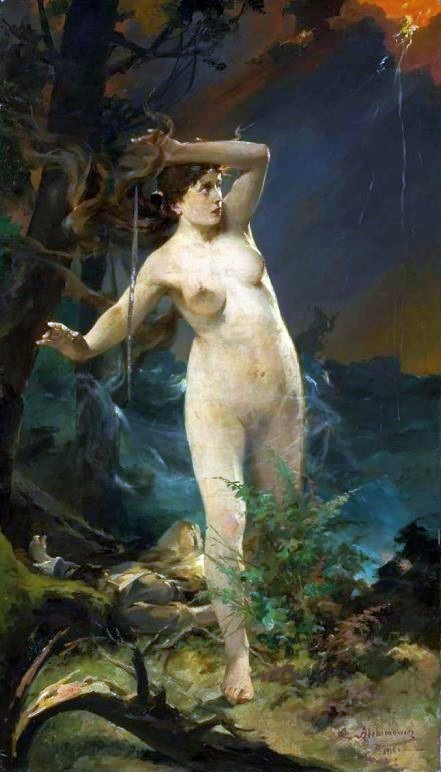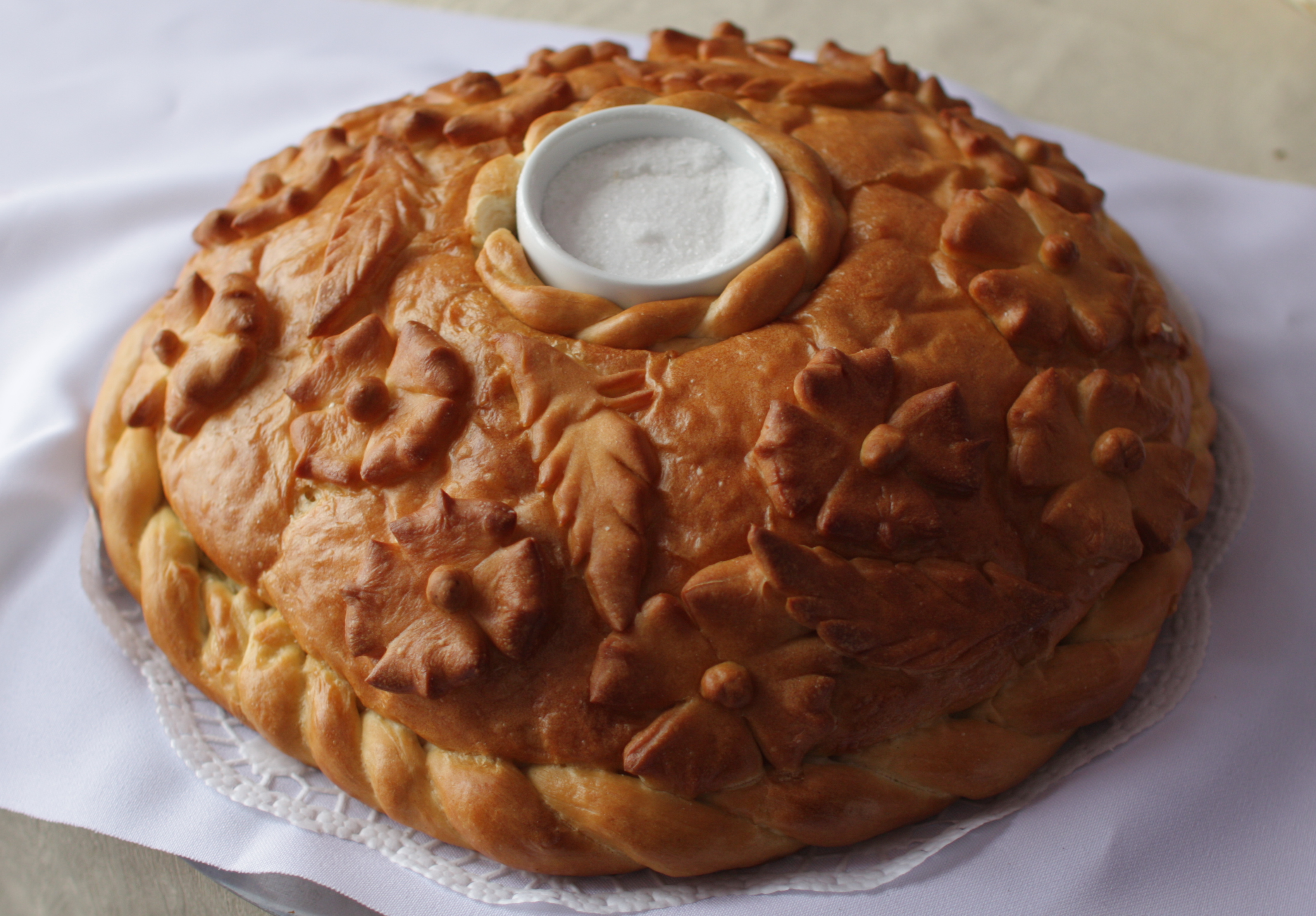|
Gabija
Gabija (also known as Gabieta, Gabeta) is the spirit of the fire in Lithuanian mythology. She is the protector of home and family. Her name is derived from ''gaubti'' (to cover, to protect) or from St. Agatha (russian: Гафия, Gafiya). Gabija is only mentioned in a list of Lithuanian gods by the Christian theologian Jan Łasicki in his treatise on idolatry (published in 1615). She is found in Lithuanian folklore. Gabija could take zoomorphic forms of a cat, stork or rooster, or she could appear as a woman clothed in red. Gabija was greatly respected and cared for like a living creature. People would feed Gabija by offering bread and salt Bread and salt is a welcome greeting ceremony in some Slavic, Nordic, Baltic, Balkan and other European cultures as well as in Middle Eastern cultures. It is also shared with some non-Slavic nations— Lithuanians, Latvians (both Baltic), R .... Fire had to be laid to bed – women would cover the charcoal with ashes every evening so ... [...More Info...] [...Related Items...] OR: [Wikipedia] [Google] [Baidu] |
List Of Lithuanian Gods
The list of Lithuanian gods is reconstructed based on scarce written sources and late folklore. Lithuania converted to Christianity in 1387, but elements of Lithuanian mythology survived into the 19th century. The earliest written sources, authored by foreigners and Christians, only briefly mention the Lithuanian gods. Beginning in the 16th century, the pagan religion received more attention from authors, but often their accounts were confused, contradictory, and heavily influenced by various religious agendas. Collection and recording of folklore began in the 19th century, by which time the pagan mythology had become fragmented and mixed with Christian traditions. The cults of old deities transformed into folklore (individual tales, myths, songs, etc.) without associated rituals. Because of such difficulties obtaining data, there is no accepted list of Lithuanian gods. Different authors present wildly contradictory reconstructions of the Lithuanian pantheon. Names from folklore m ... [...More Info...] [...Related Items...] OR: [Wikipedia] [Google] [Baidu] |
Lithuanian Mythology
Lithuanian mythology ( lt, Lietuvių mitologija) is the mythology of Lithuanian polytheism, the religion of pre-Christian Lithuanians. Like other Indo-Europeans, ancient Lithuanians maintained a polytheistic mythology and religious structure. In pre-Christian Lithuania, mythology was a part of polytheistic religion; after Christianisation mythology survived mostly in folklore, customs and festive rituals. Lithuanian mythology is very close to the mythology of other Baltic nations – Prussians, Latvians, and is considered a part of Baltic mythology. Sources and evidence Early Lithuanian religion and customs were based on oral tradition. Therefore, the very first records about Lithuanian mythology and beliefs were made by travellers, Christian missionaries, chronicle writers and historians. Original Lithuanian oral tradition partially survived in national ritual and festive songs and legends which started to be written down in the 18th century. The first bits about Baltic ... [...More Info...] [...Related Items...] OR: [Wikipedia] [Google] [Baidu] |
Fire
Fire is the rapid oxidation of a material (the fuel) in the exothermic chemical process of combustion, releasing heat, light, and various reaction Product (chemistry), products. At a certain point in the combustion reaction, called the ignition point, flames are produced. The ''flame'' is the visible portion of the fire. Flames consist primarily of carbon dioxide, water vapor, oxygen and nitrogen. If hot enough, the gases may become ionized to produce Plasma (physics), plasma. Depending on the substances alight, and any impurities outside, the color of the flame and the fire's Intensity (heat transfer), intensity will be different. Fire in its most common form can result in conflagration, which has the potential to cause physical damage through burning. Fire is an important process that affects ecological systems around the globe. The positive effects of fire include stimulating growth and maintaining various ecological systems. Its negative effects include hazard to life and pr ... [...More Info...] [...Related Items...] OR: [Wikipedia] [Google] [Baidu] |
Agatha Of Sicily
Agatha of Sicily () is a Christian saint. Her feast is on 5 February. Agatha was born in Catania, part of the Roman Province of Sicily, and was martyred . She is one of several virgin martyrs who are commemorated by name in the Canon of the Mass. Agatha is the patron saint of Catania, Molise, Malta, San Marino, Gallipoli in Apulia, and Zamarramala, a municipality of the Province of Segovia in Spain. She is also the patron saint of breast cancer patients, martyrs, wet nurses, bell-founders, and bakers, and is invoked against fire, earthquakes, and eruptions of Mount Etna. Early history Agatha is buried at the Badia di Sant'Agata, Catania. She is listed in the late 6th-century associated with Jerome, and the , the calendar of the church of Carthage, . Agatha also appears in one of the of Venantius Fortunatus. Two early churches were dedicated to her in Rome; Sant'Agata in via della Lugaretta, Trastevere, and notably the Church of Sant'Agata dei Goti in Via Mazzarino, a titu ... [...More Info...] [...Related Items...] OR: [Wikipedia] [Google] [Baidu] |
Jan Łasicki
Jan Łasicki ( la, Johannis Lasitii or Lasicius; 1534–1602) was a Polish historian and theologian. He was well-educated and traveled extensively in Western Europe from 1556 to 1581. Around 1557 he converted to Calvinism, becoming a follower of the Unity of the Brethren after 1567. His major work is eight-volume ''Historia de origine et rebus gestis fratrum Bohemicorum''. Only one volume survives, which deals with customs and organization of the Brethren and was first published in 1660. His other works include ''Historia de ingressu Polonorum in Valachiam cum Bogdano'' (1584) about the Polish invasion of Wallachia. The work was translated into Polish by Władysław Syrokomla in 1855. His 18-page ''Concerning the gods of Samagitians, and other Sarmatians and false Christians'' (''De diis Samagitarum caeterorumque Sarmatarum et falsorum Christianorum'', written and published in 1615) provides a list of Lithuanian gods and is an important resource in the study of the Lithuanian myth ... [...More Info...] [...Related Items...] OR: [Wikipedia] [Google] [Baidu] |
Folklore
Folklore is shared by a particular group of people; it encompasses the traditions common to that culture, subculture or group. This includes oral traditions such as tales, legends, proverbs and jokes. They include material culture, ranging from traditional building styles common to the group. Folklore also includes customary lore, taking actions for folk beliefs, the forms and rituals of celebrations such as Christmas and weddings, folk dances and initiation rites. Each one of these, either singly or in combination, is considered a folklore artifact or traditional cultural expression. Just as essential as the form, folklore also encompasses the transmission of these artifacts from one region to another or from one generation to the next. Folklore is not something one can typically gain in a formal school curriculum or study in the fine arts. Instead, these traditions are passed along informally from one individual to another either through verbal instruction or demonstr ... [...More Info...] [...Related Items...] OR: [Wikipedia] [Google] [Baidu] |
Zoomorphic
The word ''zoomorphism'' derives from the Greek ζωον (''zōon''), meaning "animal", and μορφη (''morphē''), meaning "shape" or "form". In the context of art, zoomorphism could describe art that imagines humans as non-human animals. It can also be defined as art that portrays one species of animal like another species of animal or art that uses animals as a visual motif, sometimes referred to as "animal style." In ancient Egyptian religion, deities were depicted in animal form which is an example of zoomorphism in not only art but in a religious context. It is also similar to the term therianthropy; which is the ability to shape shift into animal form, except that with zoomorphism the animal form is applied to a physical object. It means to attribute animal forms or animal characteristics to other animals, or things other than an animal; similar to but broader than anthropomorphism. Contrary to anthropomorphism, which views animal or non-animal behavior in human terms, zo ... [...More Info...] [...Related Items...] OR: [Wikipedia] [Google] [Baidu] |
Bread And Salt
Bread and salt is a welcome greeting ceremony in some Slavic, Nordic, Baltic, Balkan and other European cultures as well as in Middle Eastern cultures. It is also shared with some non-Slavic nations—Lithuanians, Latvians (both Baltic), Romanians (Romance) as well as some Finno-Ugric peoples like the Karelians—all of which are culturally and historically close to their Slavic neighbours. It remains common in Albania, Armenia, and among the Jewish diaspora. This tradition has also been observed in spaceflight. Etymology The tradition is known locally by its Slavic names, all literal variants of "bread and salt": be, Хлеб і соль, bg, Хляб и сол, cz, Chléb a sůl, mk, Леб и сол, pl, Chleb i Sól, russian: Хлеб-соль, sh-Cyrl-Latn, Хлеб и со, Hlȅb i so, sk, Chlieb a soľ, sl, Hlẹ̑b in sol, ua, Хліб і сіль. It is shared with some of the neighbouring non-Slavic peoples—the Latvians and Lithuanians (both Baltic nation ... [...More Info...] [...Related Items...] OR: [Wikipedia] [Google] [Baidu] |
Lithuanian Goddesses
Lithuanian may refer to: * Lithuanians * Lithuanian language * The country of Lithuania * Grand Duchy of Lithuania * Culture of Lithuania * Lithuanian cuisine * Lithuanian Jews as often called "Lithuanians" (''Lita'im'' or ''Litvaks'') by other Jews, sometimes used to mean Mitnagdim See also * List of Lithuanians This is a list of Lithuanians, both people of Lithuanian descent and people with the birthplace or citizenship of Lithuania. In a case when a person was born in the territory of former Grand Duchy of Lithuania and not in the territory of modern ... {{disambig Language and nationality disambiguation pages ... [...More Info...] [...Related Items...] OR: [Wikipedia] [Google] [Baidu] |
Domestic And Hearth Deities
Domestic may refer to: In the home * Anything relating to the human home or family ** A domestic animal, one that has undergone domestication ** A domestic appliance, or home appliance ** A domestic partnership ** Domestic science, sometimes called family and consumer science ** Domestic violence ** A domestic worker In the state * Domestic affairs, matters relating to the internal government of a Sovereign state * Domestic airport * Domestic flight * Domestic policy, the internal policy of a state Other * Domestic, Indiana, an unincorporated community in Wells County * ''Domestikos'' ( en, the Domestic), a Byzantine title ** Domestic of the Schools, commander-in-chief of the Byzantine army in the 9th-11th centuries * ''Domestic'' (film), a 2012 Romanian comedy film See also * Domestic discipline (other) * Housekeeper (other) Housekeeper may refer to: * Housekeeper (domestic worker), a person heading up domestic maintenance * "House Keeper" (song), 1 ... [...More Info...] [...Related Items...] OR: [Wikipedia] [Google] [Baidu] |





